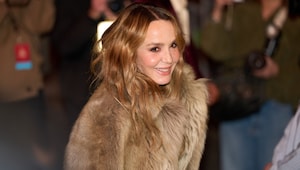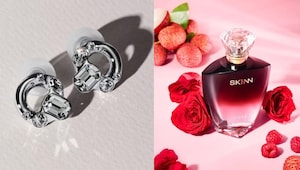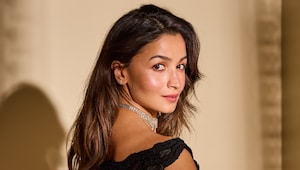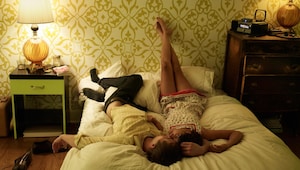A 101 Guide On How to Use Brushes
Industry’s finest preach about the brushes you need, the ones you don’t, and how we’re using them all wrong

Sound the beauty hall alarm, we’re knee-deep in unicorn- bristle triple-fibre fan brushes that we have no clue how to use. But help is here:
The beginner’s kit
Foundation brush

Artis Elite Oval 7,
net-a-porter.com,
₹4,600 approx
Fingers or beauty blenders are fine, but if you want an airbrushed look (and to make things quicker), use a brush. This one is great for beginners because where most brushes are designed with use by make-up artists in mind, Artis tools have inverted handles, which make self-application easier.
Powder brush

Real Techniques Powder Brush, nykaa.com, ₹1,169
Choose a powder brush with a densely bristled head. Real Techniques Co-Founder Samantha Chapman suggests a medium size, which can dust on blush or bronzer. Natural bristles lay down powder best, but for cream or liquid formulas, choose synthetic bristles.
Eyeshadow Packing Brush

Smashbox All-Over Shadow Brush, ₹2,200
Step one in any eye look (the part where you’re applying the base colour) needs “something small and flat for building up product”, according to MyKitCo Founder and MUA James Molloy. Otherwise, you’ll be dealing with a heck load of fallout. The flatness helps place even amounts onto lids, patting it into place securely (and satisfyingly).
Eyeshadow blending brush

Wet n Wild Pro Brush Line Fluffy Blending Brush, ₹599
To complement your packing brush, you’ll also need a fluffier number, designed to buff out shadow, creating a diffused look with no harsh lines. Flat brushes aren’t great for this, so Zoe Boikou of Zoeva recommends an eyelid-crease brush. It can double up to apply subtle contour in your sockets.
Brows and liner

L.A. Girl Duo Brow Brush, ₹625
Choose multi-use, dual- ended brushes to maximise the potential of your basic kit. After using the spoolie to brush your eyebrow hairs upwards, Spectrum Collections Co-Founder Sophie Pycroft suggests using an angled edge “with a brow pomade or powder—and feel free to use it later for any gel eyeliner, too”. Just clean it after...
Branching out

Concealer brush
Kiko Milano Smart Concealer Brush, ₹800
Thought a simple ring finger was instrument enough to apply your concealer? According to Samantha, you thought wrong, if you want your concealer to stick around. “We have oils in our fingertips, and that’s when you start to get creasing.” She suggests a light touch, gently “dusting” concealer where needed in thin layers.
Eyeliner smudger brush

Huda Beauty Eyes Build & Blend Brush, ₹1,555
If you’re experimenting with liners or dark shadow along the lashline, a smudger is indispensable. Smaller and denser than other brushes, it keeps lines of colour precise while creating pro-looking smudginess. This double-ender blurs dreamily without tugging on your delicate eye area, and the other end’s a multi-purpose blender. Win!
Face contour brush

Sephora Collection Dual Ended Powder & Blush Brush, ₹2,200
It’s not for everyone, but if you want to contour, choose a small angled brush to place darker make-up under cheekbones, on your temples, and down the sides of your nose. Then use a bigger, fluffier brush to blend. Stay away from large sweeping motions—you’re aiming to create subtle areas of depth.
Fan brush

M·A·C Dup Fibre Fan Brush, ₹2,500
Gorgeous, versatile and... kind of confusing, these peacock-tail-shaped brushes divide the nation (and our experts). Zoe recommends using a delicate and dense fan brush for subtle blush application, highlight,
and even to sweep away fall-out (though this should be minimal if you’re using your brushes correctly—more on that to the right).
Eyeshadow contour brush

The Body Shop Eyeshadow Blender Brush, ₹695
Where larger crease brushes work for wider, subtle bands of contour in the socket, those pursuing Lana Del Rey-style ’60s eyes (everywhere on AW runways) need this smaller lid contour brush, which tapers in the middle for extra-precise contouring. After applying your base shadow, use this to apply something a few shades darker slightly above your folds in a rainbow shape.
Pro tools
Lip brush

Dior Lip Brush, price on request
Going super-bright or deep with your lipstick? Spectrum Collections Co-Founder Hannah Pycroft suggests a lip brush, stat, which helps when “contouring lips, being more precise, and defining the Cupid’s bow”. Pick a retractable tool, or one that comes with a lid (unless you want the inside of your bag to look like something out of Carrie).
Curved contour brush

Estée Lauder Sculpting Foundation Brush, ₹4,000
This brush intuitively follows the contours of your face for precision definition, seamless application, and blending on your cheekbones, nose bridge, décolletage and anywhere else you might fancy highlighting.
Lash fan brush

Sigma Beauty E41 Fan Brush, ₹1,050
“If you’re a mascara junkie and want the finest, longest, most-perfect lashes, a tiny synthetic fan brush helps you paint the lower lashes,” says James, who’s famed for Twiggy-esque, babydoll lashes. “It’s a really advanced, awesome little brush.” Perhaps not one for your everyday mascara, but worth trying if you’ve got an extra 10 minutes to spare.
Eyeliner brush

Colorbar Fabline Eyeliner Brush, ₹250
Looks a lot like Hermione’s wand, and will deliver equally magical winged liner, too. It’ll take a little getting used to if you’re more acquainted with felt-tip-style pen liners, but it’s worth it for the versatility it affords. Best with gel liner—dip the brush, swipe off the excess on the back of your hand, steady an elbow on a flat surface and let the angled end do the work.
Lash Separator

Morphe M221 Metal Eyelash Definer
Brush, price on request
You know that groomed, tinted lashes look? This guy’s your answer. Samantha, who uses one “non-stop”, recommends it to anyone who wants a no-mascara finish. “It also means you get more from your mascara when it gets clumpy—just brush it through, reapply your mascara, then brush through again.”
The MUA Cheat Sheet
Want to take your brushwork to new heights? Let the experts help.
1. How do I spot a quality brush?
According to Zoe, if the tip of a brush feels rough and the bristles are thick and blunt, they have been cut into shape (a bad sign): “It should be laid into shape in a specific mould and bound together with string.” Look for brushes with several layers of lacquer on the handle, which protects it from swelling in humid air. Sophie and Hannah Pycroft advise choosing “densely-packed” brushes, and James prefers a weighted brush—which helps with leverage and control—and a copper or nickel ferrule (the metal part around the bristles), as aluminium ferrules dent more easily.
2. Should I go for synthetic or natural?
The brush fibres you choose depend on both your products and preferences. It’s true that natural bristles work best with powders, bronzers, blush and dry shadows, while synthetic bristles work better with creamier formulas (though they can also cope with powder, Samantha assures). But if you’re seeking vegan and cruelty-free brushes, opt for synthetic, as natural bristles, in most cases, are sourced from animal hair. Helpfully, synthetic bristles are also easier to clean because they don’t have the cuticles that natural hairs do, so they don’t trap make-up as easily.
3. I’m having major fallout struggles.
If you feel like your shadow’s crumbling under your eyes (a common struggle), Samantha suggests trying to apply thinner, lighter layers of product. Overloading your brush with more than it can hold will mean it sheds excess pigment as soon as it gets to your face (that’s why you’re looking like Marilyn Manson whenever you try to go smokey). Gone a little overboard? Tap the excess powder off your brushes before it reaches you (don’t blow—think of the bacteria!). It’s also worth investing in an eye-make-up primer if you’re going ultra-heavy on the pigment.
4. Why aren’t things blending right?
Feel like you’re constantly battling patchy areas that resist your blending brush? The problem probably lies in how you’re holding the brush. To solve your blending woes, James suggests using lighter pressure when applying pigment. Holding a brush close to the bristles makes for heavier pressure, which isn’t ideal if you’re after the flawless look. Grip no closer than where the ferrule meets the handle—and holding even further up can make for a super-subtle, pro effect. The more layers you apply, the lighter the pressure should be.
more from Beauty

Why blush balms are the low-effort glow stick for fuss-free radiance

“Pebbling” is the non-toxic, genuinely adorable dating trend we all needed

Is 'future faking' the new gaslighting? Decoding this new dating trend

Bad at gifting? Check out these stocking stuffer ideas based on each zodiac sign

15 new Christmas movies you might want to add to your 2025 holiday watch list

Why glycolic acid is your skin's best friend for the winter season

How training for a marathon became the most honest conversation I have ever had with myself

Emily in Paris season 5 is back—and we’re still hate-watching every minute of it

Women have long been having sex on the first date—so why do some of us still feel shamed?

The 'shixie' is a modern take on the 70s shag haircut: 10 style ideas and how to wear the trending look
